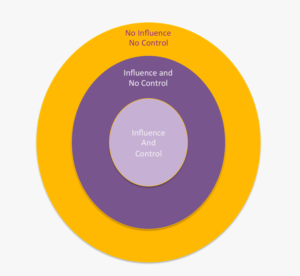
Top Recruitment Sectors for growth in 2018
It is five years since I wrote my amazingly popular blog Top 5 Recruitment Sectors to be in for the next 5-10 years. At the time unemployment was still rising across most of Europe and the UK economy flat-lining.
25,000 views later things have transformed somewhat and we have seen some dramatic changes in the World.
Economic positive growth has returned to much of the world economy and the OECD outlook for 2018 is very positive. The UK voting for Brexit and the US voting for Donald Trump have seen a huge shift towards populist voting and a rejection of the establishment and globalisation and sadly the growth of extremist terrorism.
Overall however I believe our predictions have been pretty accurate.
At the time our predictions were:
- Information Technology
- Engineering
- Energy, Oil and Gas
- Healthcare
- Emerging Technology application
Anyone who moved into these sectors in 2013 would have seen a pretty successful period of opportunity and growth perhaps only energy, oil and gas sector agencies may have been disappointed.
This year I have accepted a few speaking engagements at conferences, the first of which is Recruitment Expo 2018 in London at the end of January.
There I will be talking about the Future of Recruitment 2020-2030 and will be sharing my views on what the world of employment and recruitment will look like in 2020-2030? What changes are likely and unlikely? Will Artificial Intelligence and Bots replace everyone and everything? Will recruiters still have a job and if so what will that job look like?
UK and Global Economic Dynamics
As always it is important to state the economic forecasts on which we are basing our predictions.
2017 has seen UK economic growth come in at around 1.5% pretty much in line with what we predicted last year in our blog Top Recruitment Sectors for growth in 2017
and above the 1% some people feared. In fact JP Morgan estimate it will end up at 2%.
For 2018 most commentators are making forecasts between 1.4% (Chancellor of the Exchequer) and 2.2% (Capital Economics Consultancy). We have chosen to base our forecast on a UK GDP Growth rate of 1.8%, which is the median. We believe the biggest impact on the recruitment sector will be the pervasive skill shortages across the UK that will see salaries and freelance/temp rates rise strongly in 2018.
Globally the picture is positive which has seen strong growth in the world’s stock markets. The BBCs Economic Editor Kamal Ahmed characterises it as …
“the gentle recovery in economic growth and increasing demand for companies products across the major drivers of the world economy – Japan and the Asian emerging markets; the Eurozone and, most importantly, America.
Secondly, there is the continuing stable expansion of that other engine of the world economy – China.
It is the first time since the financial crisis that such a growth “synchronisation” has happened.
Thirdly, there is little evidence of increasing inflationary pressures, meaning interest rates are likely to remain at close to historically low levels.”
Taken from BBC Website
All in all we believe the economic outlook for recruiters will be favourable with one or two challenges caused by the roller-coaster headlines associated Brexit negotiations.
On this our advice is simple to our readers and clients.
Stay focused on your locus of control and do not become distracted by things like Brexit over, which you and your teams have no influence and no control.

Top five Sectors for high growth in 2018
No 5. Construction
With several of our clients operating very successfully in this sector we’d love to be more positive as we do see a huge skills shortage in construction and therefore the opportunity for strong agency growth is very high.
There is however a large amount of uncertainty caused by Brexit over new
infrastructure and commercial projects.

The recent figures in December (published in January) from IHS Markit on the Purchasing Managers index pointed to a mixed picture with Commercial projects index contracting, the infrastructure projects index stable but house building index riding high. Overall the picture was positive with a growth figure of 52.2 (any figure over 50% is positive growth). This was the third month in a row and:
There were positive signals for the near-term business outlook, with new order growth reaching a seven-month high and job creation the strongest since June
The sectors employment index was also positive so overall we see the future demand for staff from projects will remain healthy. What makes us even more positive is the migration figures which show that many of the Eastern European workers from Poland, for example, have returned and reduced the available talent pool.
With the overall demand from UK Construction healthy for next six months and availability of skills weak we see this as positive for those recruitment agencies in this sector though given the uncertainty we would not be encouraging too many businesses to risk new entry into the market currently.
There are many new infrastructure projects planned in 2018-19 and as we move towards getting clarity on the post-Brexit world we believe investment will return to the sector.
Overall this is our reason placing Construction at No. 5 this year.
No. 4 Healthcare
This is predominantly in the area of temporary nursing and medical staff, which according to Kevin Green REC is a result of the strain on NHS Trusts.
We have include Healthcare for the first time in a couple of years as the sector appears to have shrugged off the challenges and uncertainty surrounding IR35 and the demand for health professionals seems once again to be growing rapidly and at a steady pace.

“Nursing and medical staff remain the most in demand for temporary roles – further evidence of the strain the NHS is feeling on filling vacancies.
Whilst the above quote relates to his comments in the December 2017 IHS Markit/REC Report on Jobs what is clear is that this is a trend that is unlikely to subside in 2018 and if anything likely to accelerate as the demand for healthcare services shows no sign of abating.
As can been seen there are clearly huge supply issues as stated recently in the Guardian 13th December 2017
While the NHS in England has 40,000 more clinical staff than in 2012, it is short of 42,000 nurses, midwives and therapists, according to Health Education England, which has drafted the NHS’s first strategy in 25 years to tackle chronic understaffing.
HEE, the NHS’s staffing agency, also warns that the health service workforce, which already stands at 1.4 million, will need to increase by 190,000 by 2027 unless the rise in illness recedes.
Bank and agency personnel cover most of the vacant shifts. But HEE warns that patients could receive poorer care because unavailability of staff is so common that 8% of vacant shifts go unfilled, thus “increasing pressure on existing staff and potentially impacting on quality”.
The HEE Report also highlighted:
Shortages are now so acute that:
- The NHS is short of 42,000 nurses, midwives, physiotherapists and occupational therapists.
- A widespread lack of nurses is most severe in London, where 15% of posts are vacant, and lowest at 8% in the north-east.
- There are 1,674 (26%) fewer district nurses and 842 fewer learning disability nurses than in 2012.
- GP numbers have fallen by 1% over the last five years despite a key government pledge to increase the total by 5,000 between 2015 and 2020.
- Almost one in three paramedic jobs are vacant across England.
- The number of nurses leaving the profession rose from 7.1% in 2011-12 to 8.7% last year.
The NHS has become much better at controlling off framework spend and so the barriers of entry for non-framework providers are high and we see them remaining so if not increasing in the future. This sector therefore has good growth opportunity for framework providers.
No. 3 Manufacturing
In the final quarter of 2017 manufacturing enjoyed its best quarter for three and a half years and the outlook given the reduction in the pound is for this to continue for the next 2-3 years.

Manufacturing has certainly been a major winner of Brexit and exporters particularly are seeing a renaissance in their fortunes, which bodes well for UK Plc. in the years to come.
This is a result of two big trends; a weaker sterling caused by Brexit, which is making exports cheaper and the expanding global economy particularly China, Europe and the USA.
Against this back drop we must take note of the supply of workers in the sector which according to surveys in 2017 is reaching critical point with 67% of manufacturers in the summer reporting concerns that skill shortages were affecting their ability to grow and met demands for new orders.
This reinforces Kevin Green’s comments that we will see significant increased pressure on salaries in 2018.
The supply pressures were reiterated by the CBI in October 2017 following a survey of 450 members stating:
The number of manufacturing firms citing a shortage of workers for limiting their investment plans is at its highest for four years, according to a survey by the CBI.
In another survey of 371 manufacturers, 28% said order books were above normal while 11% said they were below normal. The balance of + 17 points was the joint highest on record and well above the long-term
The CBI stated that order books were particularly buoyant for the motor vehicles and transport equipment, and mechanical engineering sectors.
Anna Leach, the CBI’s head of economic intelligence, said: “As we head towards the end of 2017, UK manufacturers’ total order books remain at a near-30-year high, with export order books remaining at their strongest since the mid-1990s.
Taking all this evidence into hand we are confident that 2018 will be a great year for recruitment agencies servicing the manufacturing sectors.
We have some concerns about the medium to long term as we believe this critical skill shortage will encourage organisations, with interest rates so low, to accelerate their automation plans introducing Bots, Augmentation, Drones, 3D Printing and AI to increase productivity within their manufacturing processes.
For this reason we would encourage recruitment agencies to seize this opportunity to move into these key niche sectors to future proof their business and take advantage of the premium fees that will be available.
No. 2 Engineering
As stated in previous years the top two sectors offer by far the greatest opportunity for growth than any others. This year however we do see manufacturing and healthcare starting to close the gap and for once it is possible that one of them could by the end of 2018 break into the top two.
We have stated this before but the scale of the problem is estimated to be:
Research suggests that 182,000 additional workers are needed to plug engineering-focused graduate and apprentice positions every year until 2022, according to Engineering UK.
That’s over 1m more engineers.
According to Engineering UK; Currently the UK produces only 46,000 engineering graduates each year. There will also be demand for around 69,000 people qualified at advanced apprenticeship or equivalent level each year. Yet only around 27,000 UK apprentices a year currently qualify at the appropriate level.
There is light at the end of the tunnel but it is many years off and that is the introduction of the apprenticeship levy is forcing employers to look at investing in training, The numbers of higher apprenticeship scheme (degree equivalent) and the number of students embarking on these is growing and will accelerate over the next 2-3 years.
Sadly for employers these apprentices are 5-8 years away from making a significant impact on the skill shortage but it’s a start.
As with manufacturing, we see automation, AI, augmentation and bots having an impact, which will also help the UK productivity figures that are woefully behind the rest of the G7 countries.

As stated in previous years the top two sectors offer by far the greatest opportunity for growth than any others. This year however we do see manufacturing and healthcare starting to close the gap and for once it is possible that one of them could by the end of 2018 break into the top two.
- An ageing workforce of baby-boomers leaving between now and 2025.
- The lack of STEM graduates over the past 10-15 years means the talent pool to replace them is woefully small and undersized
- Brexit migration changes have seen the number of foreign nationals from EU countries returning to dampen the talent pool
- The under investment in training over the past 10-15 years means the number entering the market to replace those exiting is totally insufficient.
No. 1 IT and Technology
Once again IT and Technology tops our top five list and we do not really see this changing before the end of the decade.
All our clients operating in these sectors have healthy grow figures, typically 30-100% year on year. Their placement fees and margins are 18-22%, and their average fee values approaching £8-10,000 per deal.
Candidate shortages pervade the sector and the list of critical skills that people cannot source grows monthly.
Our IT & Tech Niche Recruitment Agencies tell us that the following are the top ten they predict for 2018 in no particular order are:
- AR Development skills
- Data Scientists
- Cyber Security Experts
- Mobile App Developers
- SaaS in the Cloud Professionals
- Applied Machine Learning
- Multi-faceted Programming languages (Python, JavaScript)
- Data Analytics
- Digital Transformation
- AI Experts
The principal drivers in this sector that are causing the skills shortage are:
- Historical shortages of IT professionals
- Acceleration of development and adoption IT & Tech products by business
- Push for commercial and competitive advantage
- Push for the next disruptive business model
- Lack of sector training
- Baby Boomer Generations leaving the sector
These pressures are global not just UK. In fact it could be argued that the UK leads the world in many of these micro niche sectors such as Digital Transformation and Development, FinTech, AI, AR and Big Data.
For those businesses already in this sector we see 2018 being a healthy year for growth and margins.
Once again that’s our predictions for 2018.
These forecasts are based upon our hands on experience of working with 30-35 recruitment agencies across all sectors during the past 12 months. With all of them growing at annual rates of over 30%+ year-on-year and some 200-300%, we believe we are well placed to know the best sectors to work in.
As with 2017, despite Brexit we continue to see healthy times ahead for the UK Recruitment Market but as we move beyond 2020 with Brexit and the advance of technology the future remains less clear.
You may have a difference of opinion and have experiences, which are not so positive so please contact me, [email protected] and let us know or share your thoughts.
We’d love to hear them.

Once again IT and Technology tops our top five list and we do not really see this changing before the end of the decade.
All our clients operating in these sectors have healthy grow figures, typically 30-100% year on year. Their placement fees and margins are 18-22%, and their average fee values approaching £8-10,000 per deal.
Candidate shortages pervade the sector and the list of critical skills that people cannot source grows monthly.